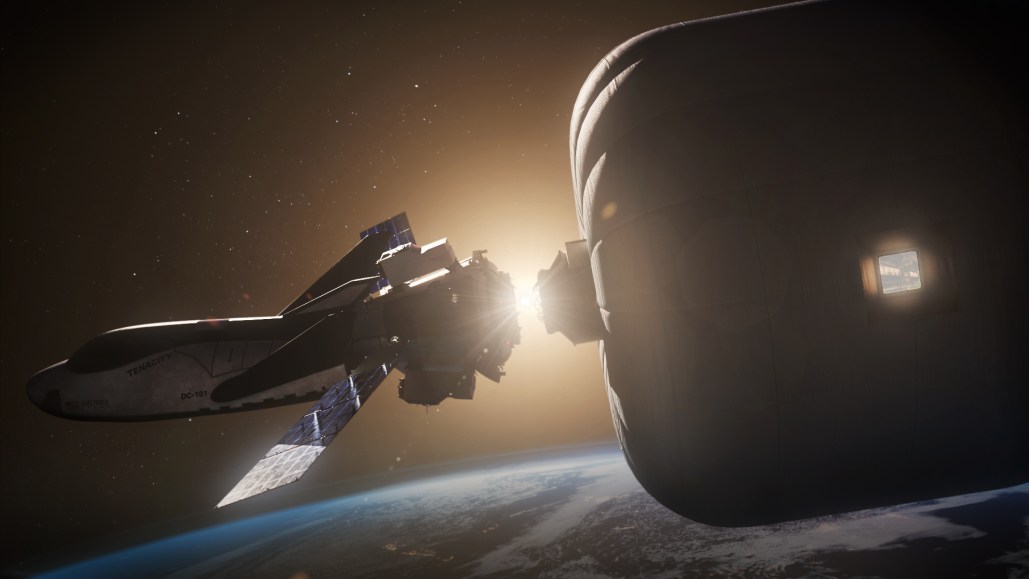"A Transformative Industrial Revolution Is Unfolding in Low-Earth Orbit"

By Tom ViceChief Executive Officer, Sierra Space
While the exploration of deep space is critical to advancing our understanding of so many unanswered questions about the universe and our place in it, it is equally as critical that the United States government and private industry work together to lead the commercialization of Low-Earth Orbit (LEO), and capture the resulting massive new space economy.
As I wrote in The Washington Post previously, the most profound chapter in human history is the industrial revolution happening in LEO, just 250 miles above our heads. We are at a turning point for our civilization, pivoting from 60 years of space exploration to a new era of unprecedented economic activity, manufacturing and growth in space. This burgeoning epoch is called the Orbital Age®, and it will drive a new trillion-dollar industry.
We are on the cusp of the full commercialization of space as the businesses and factories of the Orbital Age establish a permanent human presence in LEO. Microgravity, higher radiation levels and a near-vacuum state provide an extraordinary environment that will enable discoveries that can improve life on Earth. As explorers, we will always stargaze and wonder about other worlds, but as stewards of this planet, we must look back on it from space and ask ourselves what we can do to help.
Biotech firms, pharmaceutical manufacturers, the makers of semiconductors and other advanced materials – companies from across the entire industrials sector – will invent and produce their next breakthrough products that will benefit life on Earth in the microgravity factories of space.
Sierra Space is building the infrastructure, and the end-to-end business and technology platform, that will accelerate the new space economy. Our company is committed to fostering close, mutually beneficial relationships with existing businesses and partners – creating powerful ecosystems – to enable companies across myriad sectors to innovate in space. As a first mover in the Orbital Age, we know how crucial this is for businesses to make the leap to LEO.
Our business ecosystem architecture will unlock this new era. It starts with leveraging our revolutionary technologies such as the first commercial family of spaceplanes, and the first commercial family of ultra-large and ultra-strong expandable and tailorable space facilities. These technologies have been in development for several years, and today are in advanced stages of production and test. Our Dream Chaser spaceplane will launch to the International Space Station imminently, and our expandable space station technology, LIFE®, having successfully completed numerous key milestone tests at NASA Marshall Space Flight Center, will be on orbit in three years.
Sierra Space is creating an entire platform and ecosystem by bringing together next-generation space transportation, affordable in-space infrastructure systems, and innovative partners, to provide turn-key solutions for our commercial and government customers.
Our human spaceflight center and astronaut training academy, led by our Chief Medical Officer and former NASA astronaut Dr. Tom Marshburn, is developing and preparing the workforce that will enable this new economy. And our science office, led by our PhDs in biotechnology and advanced materials, is working with our customers to develop new products, such as oncology drugs and advanced metallic materials.
In the 1990s, onboard a NASA platform in LEO called Wake-Shield Facility, University of Houston materials scientist Alex Ignatiev manufactured a semiconductor in the vacuum of space that was 10,000 times better in quality than ones made on Earth. In 2016, bioengineers used a 3-D printer to create a two-chambered structure of an infant’s heart from stem cells during a parabolic flight that simulated weightlessness. Microgravity quite simply revolutionizes the way we make things and will lead to advancements that benefit all of humanity.
Orbital fabrication will also unlock billions of dollars in value for companies, particularly drug makers. According to a recent study by McKinsey & Company, pharmaceutical companies could see upwards of $4B in increased annual revenue by collaborating with space companies. Consider that just one big breakthrough in oncology compounds has the dual benefit of transforming health care as we know it today.
Authors of the Harvard Business Review article, “Your Company Needs a Space Strategy. Now.,” seem to share our sense of urgency and offer some advice about finding the right team. “If you have an idea for a good or service you could produce or provide in space if a key partnership could be developed, make that partnership happen.”
Our company is committed to leading the commercialization of LEO, and to working with other industry leaders, so we can find new, innovative solutions to help us tackle the challenges we face here on Earth.
To learn more about how your company can benefit from research opportunities in microgravity, click here to download our Microgravity Report and connect with our dedicated research team.




